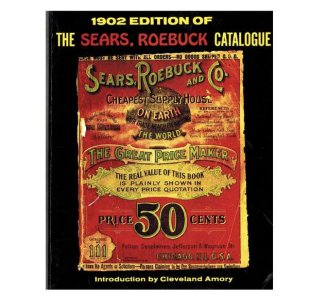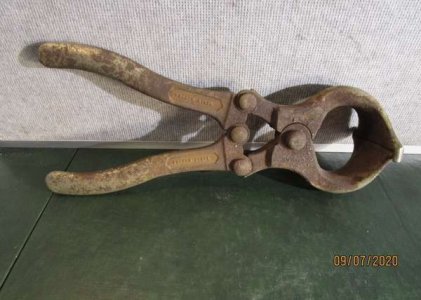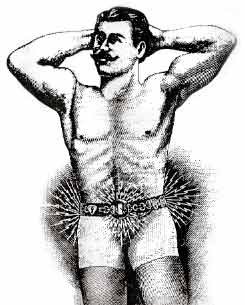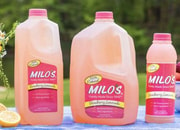Shopping in 1902: A peek at Sears’ strangest offerings
- Replies 0
Step right up, folks, and take a trip back in time with The GrayVine!
Imagine it’s 1902: Teddy Roosevelt is in the White House, the Model T is still a twinkle in Henry Ford’s eye, and the Sears, Roebuck & Co. catalogue is the Amazon Prime of its day—delivering everything from corsets to coffins right to your door.
But as we dust off the pages of the 1902 Sears catalogueue, we can’t help but marvel (and sometimes shudder) at the truly bizarre, sometimes dangerous, and always fascinating items our great-grandparents could order with the flick of a pen and a few coins.
Ready for a stroll down the strangest aisles of retail history?
Here are 11 of the most eyebrow-raising, jaw-dropping, and downright peculiar products Sears was peddling in 1902.
Some are a testament to the era’s wild optimism, others to its questionable understanding of health and safety. Let’s dive in!

1. Dr. Rose’s French Arsenic Complexion Wafers
Yes, you read that right—arsenic, the infamous poison, was once marketed as a beauty secret!
These “simply magical” for the complexion wafers promised to transform even the “coarsest and most repulsive skin” into a vision of pale, delicate beauty.
Source: @Blessed-Are-TheMeek / Reddit.
The catch? The “lurid pallor of death” wasn’t just a turn of phrase. We can only imagine the marketing pitch if it were sold today: “For that ethereal glow—just a touch of poison a day!”
2. The Toilet Mask
No, this isn’t a mask for your bathroom. This was a rubber face mask, “acid-cured” and coated with mysterious “healing agents,” designed to erase freckles, liver spots, and other blemishes.
Source: @1902sears / Instagram.
Forget spa days and cucumber slices—just strap on this chemical-laden mask and hope for the best. Microdermabrasion, meet your ancestor!
Also read: Stop suffering now! Discover which foods are silently triggering your acid reflux and the little-known ways to prevent it
3. Magic Flesh Builder and Cupper
Looking to plump up your bust, neck, or arms? Sears had you covered with this oversized suction cup contraption.
The idea was to “rebuild shrunken tissues” and “permanently remove wrinkles” by, well, sucking your skin into submission. We’re not sure if it worked, but it certainly left a mark—literally.
4. Spirits of Turpentine
Today, turpentine is something you’d use to clean paintbrushes, but in 1902, it was also a home remedy.
Sears sold it as an elixir to kill intestinal parasites. While turpentine does have some medicinal uses (think Vicks VapoRub), drinking it is a whole other story. Let’s just say, we’re glad modern medicine has moved on.
5. Aconite (Wolfsbane)
Known for centuries as a deadly poison, aconite was sold as a homeopathic remedy.
While it can numb pain by damaging nerves, it’s also a potent neurotoxin. The line between medicine and mayhem was a little blurrier back then!
Check this out: Is mushroom coffee the secret to better health? Here’s what you need to know
6. Kerosene Emulsion
This was the go-to insecticide for crops and livestock, promising to wipe out “plant lice, red spiders, and mealy bugs.”
The fine print? You’d better wash your veggies well—kerosene isn’t exactly part of a balanced diet.
7. Veterinary Castrating Knives
Sears truly was a one-stop shop. Need to geld a horse or a bull? Choose from a selection of knives with one, two, or three blades. Not for the faint of heart—or the unsteady of hand.
8. Heidelberg Electric Belt
Feeling a little run down? Suffering from “nervous diseases,” “infertility,” or “weakness peculiar to men?”
Just strap on this electric belt and let the gentle shocks work their magic. Promised as “the best, most reliable, most harmless yet powerful, cheapest cure possible,” it’s a shocking reminder of the era’s faith in electricity as a cure-all.
You might like: Unlock the secret battle against Alzheimer's disease hiding in your spice rack
9. Opium
Yes, you could order opium by mail, no questions asked. Marketed as a homeopathic remedy, it was just another item in the catalogue. If you developed a habit, well, Sears was happy to keep you supplied.
10. Nitric Acid
Another “medicine” with a dark side, nitric acid is highly toxic and corrosive. The 1902 catalogue listed it as a homeopathic remedy, but today, even inhaling the fumes is a medical emergency. We’ll stick to aspirin, thanks.
11. The Set of McKinley Assassination Slides
Not all the oddities were dangerous—some were just morbidly fascinating.
For the home educator or armchair historian, Sears offered a set of stereopticon slides depicting “realistic views of the assassination” of President McKinley, including images of his attacker “taken 10 minutes of his capture by the police.” Dinner party entertainment, 1902-style!
A Glimpse Into the Past—and a Reminder of How Far We’ve Come
Looking back, it’s easy to chuckle at the wild claims and risky remedies of yesteryear. But these catalogue curiosities also remind us how much progress we’ve made in science, medicine, and consumer safety.
The next time you grumble about childproof caps or FDA warnings, just remember: it wasn’t so long ago that arsenic wafers and electric shock belts were just a mail order away.
Read next: After years of action films, Tom Hardy says his health is in decline

Did your family ever talk about the “good old days” of mail-order shopping? Have you come across any strange or surprising items in old catalogues or family attics? Or maybe you have a favorite oddball product from your own lifetime? Share your stories, memories, or questions in the comments below!
Imagine it’s 1902: Teddy Roosevelt is in the White House, the Model T is still a twinkle in Henry Ford’s eye, and the Sears, Roebuck & Co. catalogue is the Amazon Prime of its day—delivering everything from corsets to coffins right to your door.
But as we dust off the pages of the 1902 Sears catalogueue, we can’t help but marvel (and sometimes shudder) at the truly bizarre, sometimes dangerous, and always fascinating items our great-grandparents could order with the flick of a pen and a few coins.
Ready for a stroll down the strangest aisles of retail history?
Here are 11 of the most eyebrow-raising, jaw-dropping, and downright peculiar products Sears was peddling in 1902.
Some are a testament to the era’s wild optimism, others to its questionable understanding of health and safety. Let’s dive in!

The 1902 Sears, Roebuck catalogue sold a range of bizarre and potentially dangerous items. Image source: Amazon Books.
1. Dr. Rose’s French Arsenic Complexion Wafers
Yes, you read that right—arsenic, the infamous poison, was once marketed as a beauty secret!
These “simply magical” for the complexion wafers promised to transform even the “coarsest and most repulsive skin” into a vision of pale, delicate beauty.
Source: @Blessed-Are-TheMeek / Reddit.
The catch? The “lurid pallor of death” wasn’t just a turn of phrase. We can only imagine the marketing pitch if it were sold today: “For that ethereal glow—just a touch of poison a day!”
2. The Toilet Mask
No, this isn’t a mask for your bathroom. This was a rubber face mask, “acid-cured” and coated with mysterious “healing agents,” designed to erase freckles, liver spots, and other blemishes.
Source: @1902sears / Instagram.
Forget spa days and cucumber slices—just strap on this chemical-laden mask and hope for the best. Microdermabrasion, meet your ancestor!
Also read: Stop suffering now! Discover which foods are silently triggering your acid reflux and the little-known ways to prevent it
3. Magic Flesh Builder and Cupper
Looking to plump up your bust, neck, or arms? Sears had you covered with this oversized suction cup contraption.
The idea was to “rebuild shrunken tissues” and “permanently remove wrinkles” by, well, sucking your skin into submission. We’re not sure if it worked, but it certainly left a mark—literally.
4. Spirits of Turpentine
Today, turpentine is something you’d use to clean paintbrushes, but in 1902, it was also a home remedy.
Sears sold it as an elixir to kill intestinal parasites. While turpentine does have some medicinal uses (think Vicks VapoRub), drinking it is a whole other story. Let’s just say, we’re glad modern medicine has moved on.
5. Aconite (Wolfsbane)
Known for centuries as a deadly poison, aconite was sold as a homeopathic remedy.
While it can numb pain by damaging nerves, it’s also a potent neurotoxin. The line between medicine and mayhem was a little blurrier back then!
Check this out: Is mushroom coffee the secret to better health? Here’s what you need to know
6. Kerosene Emulsion
This was the go-to insecticide for crops and livestock, promising to wipe out “plant lice, red spiders, and mealy bugs.”
The fine print? You’d better wash your veggies well—kerosene isn’t exactly part of a balanced diet.
7. Veterinary Castrating Knives
Sears truly was a one-stop shop. Need to geld a horse or a bull? Choose from a selection of knives with one, two, or three blades. Not for the faint of heart—or the unsteady of hand.
8. Heidelberg Electric Belt
Feeling a little run down? Suffering from “nervous diseases,” “infertility,” or “weakness peculiar to men?”
Just strap on this electric belt and let the gentle shocks work their magic. Promised as “the best, most reliable, most harmless yet powerful, cheapest cure possible,” it’s a shocking reminder of the era’s faith in electricity as a cure-all.
You might like: Unlock the secret battle against Alzheimer's disease hiding in your spice rack
9. Opium
Yes, you could order opium by mail, no questions asked. Marketed as a homeopathic remedy, it was just another item in the catalogue. If you developed a habit, well, Sears was happy to keep you supplied.
10. Nitric Acid
Another “medicine” with a dark side, nitric acid is highly toxic and corrosive. The 1902 catalogue listed it as a homeopathic remedy, but today, even inhaling the fumes is a medical emergency. We’ll stick to aspirin, thanks.
11. The Set of McKinley Assassination Slides
Not all the oddities were dangerous—some were just morbidly fascinating.
For the home educator or armchair historian, Sears offered a set of stereopticon slides depicting “realistic views of the assassination” of President McKinley, including images of his attacker “taken 10 minutes of his capture by the police.” Dinner party entertainment, 1902-style!
A Glimpse Into the Past—and a Reminder of How Far We’ve Come
Looking back, it’s easy to chuckle at the wild claims and risky remedies of yesteryear. But these catalogue curiosities also remind us how much progress we’ve made in science, medicine, and consumer safety.
The next time you grumble about childproof caps or FDA warnings, just remember: it wasn’t so long ago that arsenic wafers and electric shock belts were just a mail order away.
Read next: After years of action films, Tom Hardy says his health is in decline
Key Takeaways
- The 1902 Sears, Roebuck catalogue sold a range of bizarre and potentially dangerous items, including poisonous beauty wafers, potions containing arsenic or turpentine, and medical quackery like electric belts and suction cups promising to build flesh.
- Many products advertised as homeopathic or medicinal, such as aconite (wolfsbane), opium, and nitric acid, were actually toxic or addictive, highlighting a lack of health regulation at the time.
- Some items, like castrating knives and kerosene-based bug sprays, remind us how readily dangerous tools and chemicals were made available for both household and agricultural use.
- The catalogue also offered oddities like slides depicting the McKinley assassination, showing that entertainment options back then could be just as unconventional as the health products.
Did your family ever talk about the “good old days” of mail-order shopping? Have you come across any strange or surprising items in old catalogues or family attics? Or maybe you have a favorite oddball product from your own lifetime? Share your stories, memories, or questions in the comments below!









